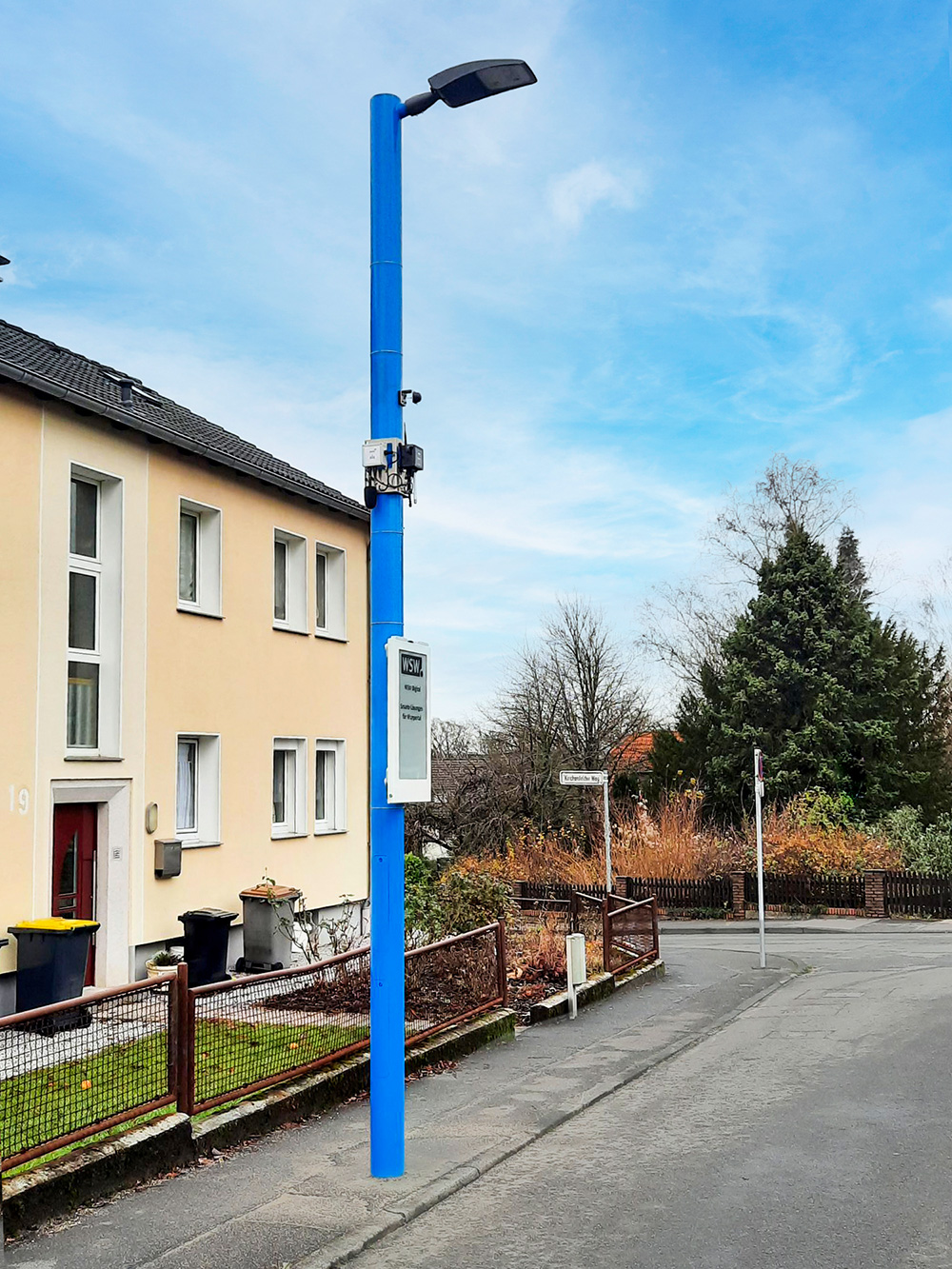
On the way to the smart city
Berlin/Wuppertal - In July, WSW launched a digitalization project with smart street lighting in Schöller Dornap. There, the municipal utility and its partner ENGIE Deutschland are demonstrating how streetlights can be used as digital infrastructure for various applications. The project is also an important contribution to the smart city strategy of the city of Wuppertal.
"In the networked city, streetlights are more than illuminants; they are infrastructure carriers," emphasizes WSW CEO Markus Hilkenbach. In Schöller-Dornap, you can even see that. Street lamps here are not only equipped with individually controllable LED lights, WSW has also attached various sensors to the poles that collect environmental data on temperature, air quality and noise pollution. A display has also been installed on one pole, on which the information can be read. The highlight of the whole project, however, is the networking of the masts and sensors. For this, WSW uses a so-called LoRaWAN radio network. "LoRAWAN" stands for "Long Range Wide Area Network." The transmitters of this radio network have a long range and at the same time operate particularly energy-efficiently. The battery-powered transmitters also operate independently of the power grid. This is an important advantage over fiber optic or LTE networks.
The project is being implemented in cooperation between WSW and ENGIE. For the real lab, WSW is using ENGIE's concept and technology. "As a long-standing partner of WSW, we are pleased to be able to contribute our know-how to this unique project," says Manfred Schmitz, Managing Director of ENGIE Germany. "Together, we want to develop smart solutions with real added value for Wuppertal to improve the quality of life in the city."
WSW wants to support the smart city strategy of the city of Wuppertal with this and other projects. In addition to the project in Schöller-Dornap, WSW is also using LoRaWAN technology in its own business areas, such as monitoring the power grid. Among other things, this makes it possible to reduce downtime in the event of power failures. WSW also provides digital infrastructure for the early flood warning system initiated by Maschinenfabrik Berger in Kohlfurth. Another area of application being investigated in Schöller-Dornap is the disposal management of AWG by measuring the fill level in used glass containers.
There are around 31,000 street lamps in Wuppertal - ideal as a physical infrastructure for a smart city. These could be individually controlled and equipped with sensors via LoRaWAN in the same way as the 224 street lamps in the Schöller Dornap real laboratory. To develop further digital applications for this physical infrastructure, WSW has formed a separate "Digital Solutions" organizational unit. "The colleagues are contact persons for all questions and ideas on the subject of digitization," says WSW CEO Markus Hilkenbach. At wsw-online.de, interested parties can find out about WSW's current digitization projects.
Your contact
ENGIE Deutschland GmbH
